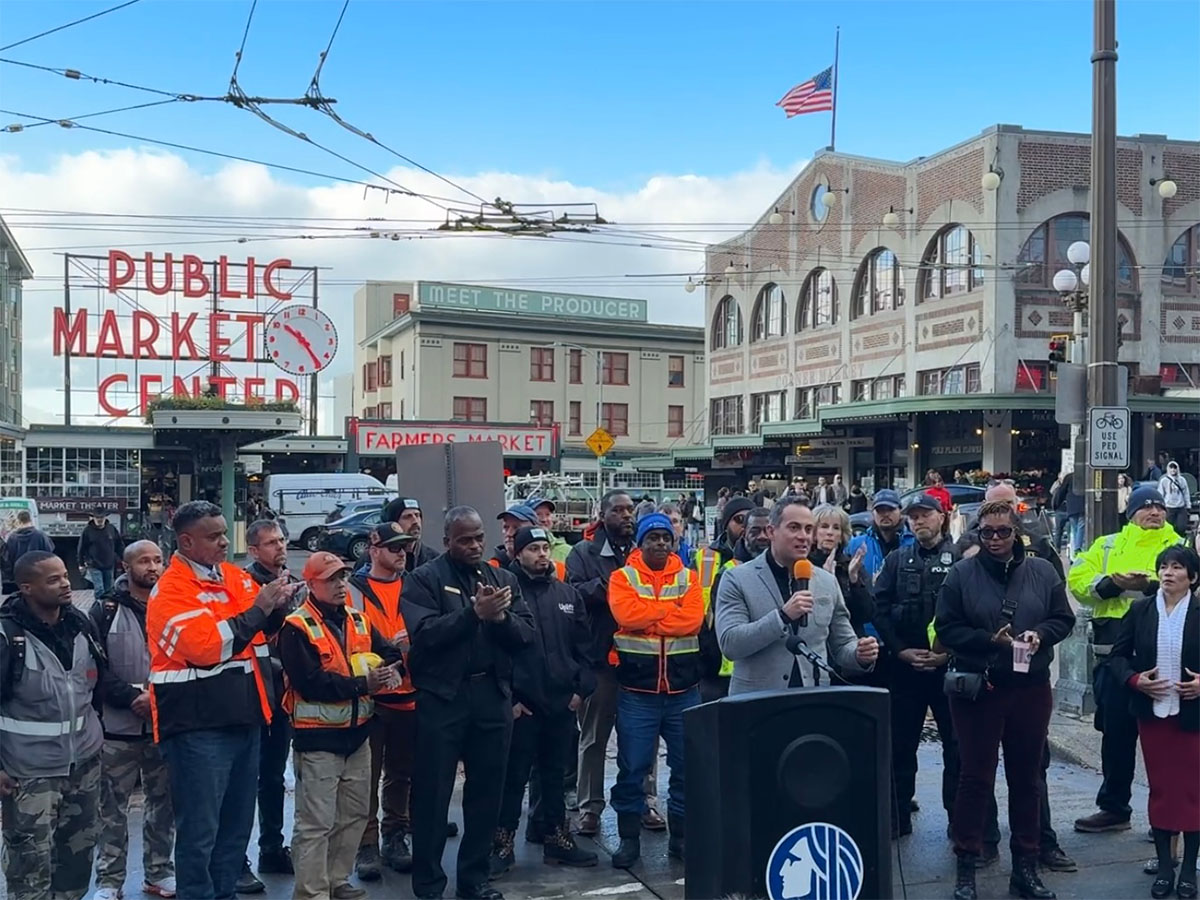News
Seattle Mayor Announces Downtown Activation Team to Revitalize City Center
Posted on

With DSA President & CEO Jon Scholes standing beside him, Seattle Mayor Bruce Harrell issued an executive order on Nov. 15, establishing the Downtown Activation Team as a pilot initiative to provide place-based activations, cleanings and safety operations in downtown Seattle, the Chinatown-International District and Little Saigon. The goal is to expand the model to other neighborhoods if it proves successful.
The announcement was made at a press conference near Pike Place Market. Harrell explained that the pilot, guided by the One Seattle Restoration Framework, brings together service providers, community partners and city departments — including Seattle police, Human Services and Parks and Recreation, to name a few — building on early successes like decreases in violent crime and emergency calls. Initial DAT operations, which began with DSA/MID in early September along the Third Avenue corridor, have shown positive results.
According to the mayor’s office, the cumulative projected impact in the Pike/Pine DAT treatment area includes a 27% decrease in violent crime, a 14% decrease in emergency service calls and a 30% decrease in emergency medical responses compared to last year.
The DSA/MID has supported this work with more than 800 graffiti abatements, 1,000 welfare checks and 2,000 cleanings this fall.
“We commend Mayor Harrell and our city partners for the collaboration and coordination we’ve seen over the last two months in the Downtown Activation Team project and look forward to continued progress moving forward,” said Jon, who spoke following Harrell at the press conference. “This place-based approach to public safety is taking advantage of the strengths of all of our partners to effect change and deliver results. This program is making a clear difference in the core of downtown, making the heart of the city more welcoming for all. Maintaining these results is critical for our continued revitalization.”
Harrell’s office outlined six key strategies guiding the ongoing tactics and actions of the city. These include:
Reduce gun violence citywide, starting with a focus on neighborhoods with the highest rates of shooting deaths and shots fired, community programs, trafficking investigations and advocacy for common-sense regulations.
Prevent and reduce high-impact crime by ensuring our police and fire departments have the tools, deterrents and authority needed to respond to today’s challenges.
Respond to 911 calls effectively and efficiently by building sufficient public safety responder staffing, expanding civilian support and diversified response options to dispatch the proper resources to address the specific needs of the incident.
Confront the opioid crisis with a public health and safety approach by reducing fatal and non-fatal overdoses and improving overdose data and information to better track numbers, locations, types and trends to better inform our approach.
Activate and enhance neighborhoods by fostering welcoming communities with restorations and cleanings, helping people travel with safer roads and transit and activating downtown as the heart of Seattle.
Tackle the root causes and impacts of violence through investments in community to build safety, youth mental health, coordination and expansion of outreach services, improved affordable housing options and increased access to healthy food.
“This is everyone’s neighborhood and everyone deserves to have a safe, clean and welcoming experience,” Jon said. “Our challenges are not intractable. They are not permanent fixtures of Seattle’s urban core. Since this effort began, violent crime and drug activity are both down and there are fewer people sleeping on the streets in the area between Westlake Park and the Pike Place Market. A big shout out to our 165 Downtown Ambassadors who have played a big role in this work.”